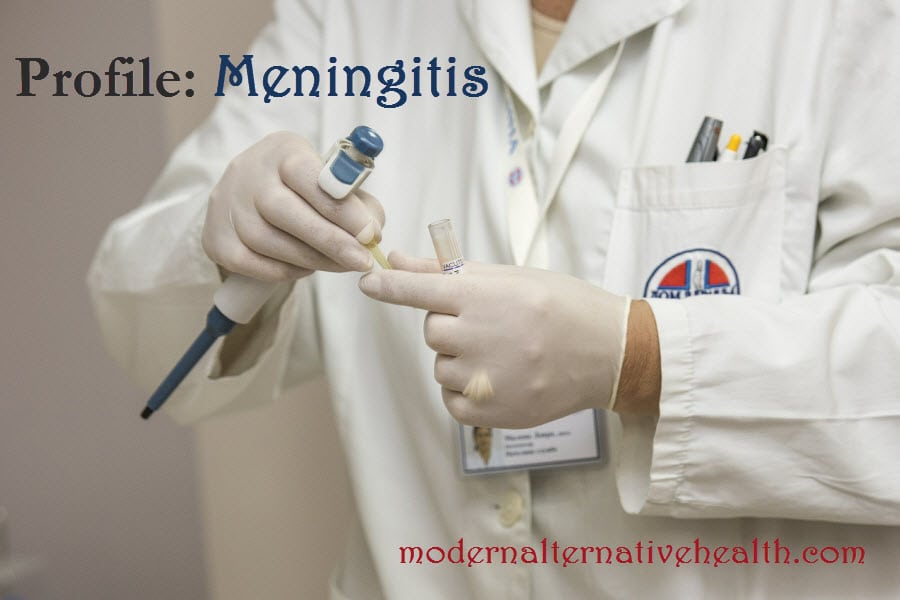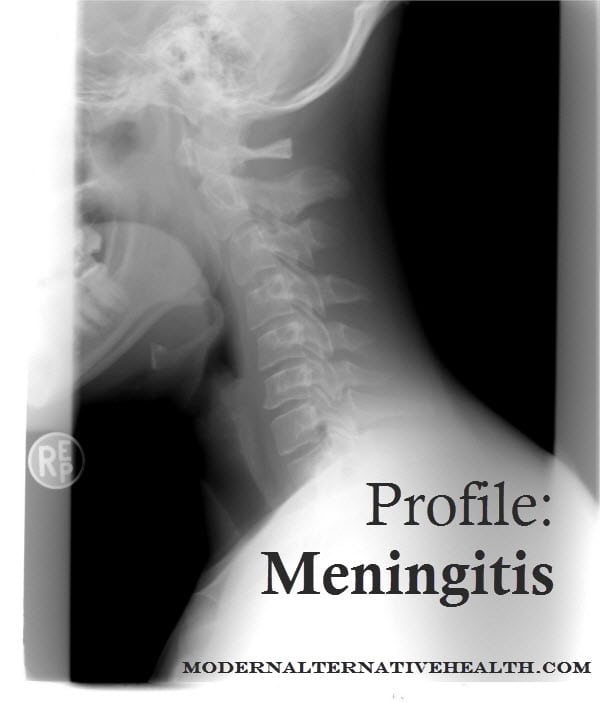 Image by Pixabay
Image by Pixabay
By Danielle, Contributing writer
If you’ve gone to the hospital with a fever, you may have heard the dreaded word, meningitis, thrown around. Just the mention can bring hysteria into any mother’s mind, but let’s unpack just what meningitis is, what its causes can be, and how we can treat it naturally.
What is meningitis?
Meningitis is the inflammation of the membranes surrounding the spine or brain. It can be caused by a bacterial, viral, fungal or mycobacterial infection. The most common symptoms are stiff neck, fevers, and headaches. Sensitivity to light, confusion, seizures, loss of appetite and rash (meningococcal) are other common symptoms. In young children, the fontanel of the head may be swollen, as well as a high fever, extreme sleepiness, and constant crying.
Most believe that a germ invades the spinal cord via the blood stream, and then has access to the brain. This is usually due to a nearby infection, such as ear or sinus infection, a shunt or surgery, or normal transmission in the blood stream.
4 Different Types of Meningitis
Viral Meningitis
The most common form of meningitis is viral. A viral meningitis infection will clear on its own, and is typically caused by enteroviruses (about 80%), which are most common in late summer and early fall. There are about 75,000 cases of viral meningitis in the U.S. each year.
Bacterial Meningitis
Bacterial meningitis is the most serious form of the infection. The most common bacterias to cause meningitis are pneumococcus (streptococcus pneumoniae, 6,000 cases in the U.S. per year), meningococcus (neisseria meningitidis; usually causes respiratory infection, there were 386 cases in the U.S. in 2014 with a 10-15% death rate), haemophilus (haemophilus influenzae b, also known as Hib), and listeria (bad lunch meat).
Fungal Meningitis
A fungal infection in the body can travel to the spinal cord, the most common of which is cryptococcus. Fungal meningitis is common in those who take medications which weaken the immune system, including steroids and autoimmune drugs.
Mycobacteria Meningitis
Mycobacteria are small, bacterial pathogens that duplicate like fungus (though they are not fungus). The most common type of mycobacteria which causes meningitis is tuberculosis. Tuberculosis typically begins as an infection in the lungs, and then travels in the bloodstream to the spinal cord to render tuberculosis meningitis.
If you suspect or are diagnosed with a mycobacterial infection, the use of mullein oil, inhaling heated apple cider vinegar, cutting out all starches, and an alkaline diet are in order.
Any infection throughout the body which gains access to the bloodstream can travel to the spinal cord, causing inflammation and wielding the diagnosis of meningitis. However, our skin and digestive tracts, where our bacteria and viruses thrive, should not allow access to the bloodstream. This is possible during surgery, by injections, cuts or large scrapes, or possibly through a leaky gut.
Therefore, the best way to prevent meningitis, is to limit exposure of pathogens to your bloodstream. Avoid vaccines, antibiotics, immune-suppressing pharmaceuticals, and foods which contribute to leaky gut. Boost gut health with nourishing foods and probiotics, as well as a good bacteria lifestyle. Avoid any chemicals which help bacteria and viruses surpass the blood barriers, including polysorbate 80 (found in many pharmaceuticals and vaccines).
Image by Pixabay
What If My Child Has Meningitis?
According to this study, diagnostic criteria for meningitis is limited, at best. If you suspect meningitis, I would consider asking for a blood draw to determine what bacteria or viruses may be at play before a spinal tap. A spinal tap carries its own set of risks, including headache in 25% of persons and infection, and is very invasive. If your child recently has had an infection (sinus, ear, respiratory), you can assume that the pathogen involved with the infection is what is causing the meningitis.
If your child has confirmed bacterial meningitis, the typical course of treatment is an intravenous antibiotic, usually Ceftriaxone (rocephin). This drug has a long list of side effects, and any antibiotic decimates the good bacteria in your immune system.
Septicaemia is a blood infection, which has very similar symptoms as meningitis. You can suspect a diagnosis of septicaemia if there is also the presence of cold hands and feet, vomiting, stomach and muscle pain, and rapid breathing.
There are natural ways to treat all of the above infections, whether they have developed into meningitis or not.
Natural Remedies for Meningococcal Infection or Meningitis
#1 Garlic
Garlic is the most powerful natural antibiotic around! Crush raw garlic and add to food or swallow whole if you can.
#2 Collodial Silver
Collodial silver is an overall antiseptic, so it will fight off any bacteria, virus, or other microbial causing distress. Apply physically to the skin around the spine and neck, and consume internally per directions.
#3 Olive Leaf Extract
Another strong microbial, it can also battle off any fungus, including candida (yeast) as well as e. coli. This is purchased as a capsule supplement.
#4 Chlorella
Helps deliver oxygen to your blood cells, as well as cleanse your blood. This can be purchased in supplement or powder form.
#5 Essential oils
Apply antibiotic and antiviral oils to the spine throughout the illness, and include in baths.
What About the Meningococcal Vaccine?
Meningococcal vaccines are currently suggested for middle schoolers, as well as being pushed for college students. They are being encouraged by the pharmaceutical companies, as well as the politicians bought by them, for multiple doses at all ages.
There are multiple strains of meningococcal, the most common being A, B, C, Y and W. The B strain is the most common, while the W strain is the most fatal. Currently, the CDC has approved three vaccines for meningitis: Menactra, Menveo, and Menmune,which still contain thimerisol, and cover only the A, C, Y and W strains. The vaccines are about 85% effective for up to two years.
Interestingly, the W strain has gone from 1-2% of the cases of meningococcal infection in the U.K. in 2008/9, to 24% in 2014/15, likely prompted by the vaccine. These vaccines are completely ineffective against the most common strain, B, accounting for 27% of college incidence of meningitis. Menomune listed a 1.3% reaction rate, while Menactra and Menveo list on their manufacturer’s insert a 1% serious adverse reaction rate, and of that, .3% of will die. Those numbers seem small, but are they?
A Look at the Numbers
There were 386 cases of meningococcal infection in the U.S. in 2014 with a 10-15% death rate, which means 39-58 people died in 2014.
87,334,510 youth in the U.S. under age 21 received the vaccine, with a 1% serious adverse event rate, and a .3% death rate. This equals 873,345 serious adverse events and 2,620 deaths.
Does that make sense to you?
Two vaccines have recently been approved for the B strain, Trumenba and Bexsero. Many are criticizing the lack of scientific protocols surrounding its safety studies. Could this possibly be more deadly than the other strains’ vaccines? As States around the U.S. seek to mandate this vaccine, I guess we will see.
How To Prevent Meningitis Naturally
- Avoid injections, immune suppressing pharmaceuticals, or drugs that have been known to facilitate entry past the blood-brain barrier, such as polysorbate 80.
- Eat a diet that will not allow leaky gut syndrome, therefore not allowing the bacteria in your gut to permeate into your bloodstream.
- Keep your immune system boosted, and treat all infections naturally.
- Take a probiotic.
- Have a home and lifestyle that welcomes good bacteria.
Have you experienced any form of meningitis in your family? How did you treat it?
Disclaimer: I am not a doctor (yet), but you should find one you trust that understands, listens and treats you how you’d like. Do not tolerate medical bullying. This is not intended to be medical advice nor to treat, cure, diagnose nor prevent any disease. Please make your medical decisions with research, a trusted physician, and common sense.



You have made the claim that 87,334,510 youth received the vaccine, and that there was a 1% serious adverse rate, along with a 0.3% death rate. I tried clicking on the link that you had in that paragraph, but it just took me to the page for Kate Tietje’s children’s health book. Could you tell me the source of your data?
I am somewhat confused. I think it’s saying that out of that 1% of serious adverse reactions, .3% of those reactions were fatal. It says a total of 24 deaths at the pink book site, not 2,620. Was that 2,620 figure from another source?
Hi Danielle, can you link to some verification for the 2600 deaths? Thanks!
Also, why did you not mention HIB vaccine? HIB infection can cause meningitis.